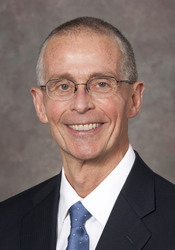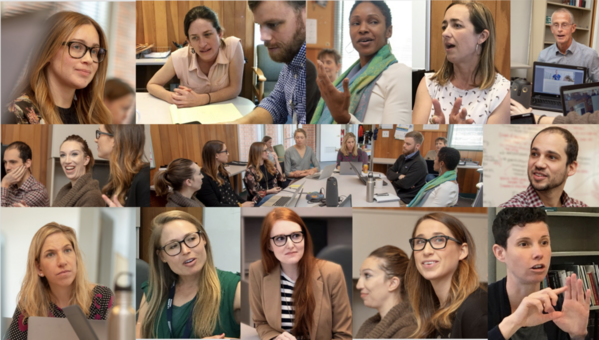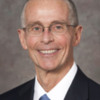Through the news media, Americans are served an almost-daily dose of violence caused by guns. This year to date, more than 33,929 people in the United States have been killed and another 30,000+ have been injured by guns. The U.S. homicide rate for firearms is 22 times greater than that of the European Union, even though the European population is 35% larger.
But to Dr. Garen Wintemute, the statistics on injuries and deaths are only one part of the story. To reverse those appalling numbers, he says, the larger focus must be on changing the conditions that foster gun violence. These include the underlying inequities that are baked into the essence of American life.

“Violence has social determinants, such as disparities based on race/ethnicity, gender or sexual orientation, place of origin and other characteristics,” says Wintemute, director of the Violence Prevention Research Program at the University of California at Davis School of Medicine. He is an expert in the public health crisis of gun violence and a pioneer in injury epidemiology and prevention of firearm violence.
To really understand the root of gun violence, Wintemute says, you have to understand that the systemic forces that gave rise to it were intentional. “The structures that engender and perpetuate violence were built purposefully and must be taken down just as purposefully,” he says.
Wintemute has been leading by example. Since the 1980s, the emergency medicine doctor has been documenting and working to undo the grip that guns have on life and death in America, destroying lives and communities. Way ahead of the curve, Wintemute was among the first to call gun violence a public health crisis, in line with the former U.S. Surgeon General David Satcher, who wrote about it in 1995 while pushing for more funding to examine it.
Wintemute’s research, which includes undercover work at gun shows around the country, has helped to thwart the use of the widely popular handgun known as the Saturday Night Special. This cheap weapon, banned in West Hollywood, the city of Compton and 16 communities in the San Francisco Bay Area in the mid-1990s and other handguns have been linked to 90% of injuries and between 70 and 80% of murders over an 18-year period. His research and testimony also led to legislative debate attempting to restrict the sale of assault rifles, including the AK-47. And in 1997, Time magazine named Wintemute a Hero of Medicine for his gun violence prevention work.
When the U.S. Congress voted to deep-six gun violence prevention funding in 1996, Wintemute was undeterred. He used more than $1 million of his own money to fund continuing research. His program, which was formed in 1991, investigates everything from criminal gun markets and background check policies to community-level intervention programs and novel methods of assessing threat.
Wintemute’s passion for preventing gun violence didn’t develop in a vacuum. In 1981, he volunteered to serve as an emergency medicine doctor in Cambodia in the aftermath of Pol Pot, the prime minister responsible for killing about a quarter of the population in four years of genocide.
"While there, I learned pretty intensively about the power of violence to shape an entire society. And in five and a half months there, I never met an intact family,” Wintemute says.
He worked in a refugee camp where 40,000 people lived. “There had been such disarray, so much separation, that the family unit was a small group of people pieced together out of the remnants of other families.”
It was clear to Wintemute that the medical issues he was seeing—including people dying from treatable conditions such as tuberculosis, heart failure, and hyperthyroidism—stemmed from the slaughter. “A society had been intentionally destroyed. People with professional education had systematically been killed there. There were no health professionals.”
Those experiences were burned into his memory and propelled him into the field of violence prevention. After earning a master’s degree in public health from what is now known as the Johns Hopkins Bloomberg School of Public Health, he saw the consequences of gun violence first hand while working in various hospital emergency departments.
He tells of an elderly female patient who had shot herself in the chest.
“She and her husband were breaking up. She was despondent over the loss, didn't want to be a burden to her children and decided just to end things immediately. But that didn't happen—she survived.”
Thinking about what led to the woman’s near-demise, Wintemute says that many of the causes of gun violence can be addressed.
“Sometimes that's work at the individual level counseling for people who are depressed. Sometimes it's systemic change, working to alleviate job insecurity, housing insecurity, working to provide education and making sure that opportunity is inclusive. The absences of those things are important determinants of risk for violence, and we can do something about them.”
A recent study published in the journal The Lancet, for example, examined the link between firearm violence and structural racist policies in an African American community in Boston. “Redlining practices of the 1930s potentially contribute to increased rates of firearm violence through changes to neighborhood environments, namely through preclusion from homeownership, poverty, poor educational attainment, and concentration (i.e. segregation) of Black communities,” the article said. “These downstream mediating factors serve as points for policy interventions to address urban firearm violence.”
Research currently underway in Wintemute’s program details the traumatic impact that gun violence has on communities. In a survey, he explains, “We asked the question, how often during a week do you encounter a sidewalk memorial at a place where somebody has been killed from violence that was not the result of a motor vehicle crash?” Reflecting on the responses, Wintemute says, “I found myself thinking, there are people in California who probably must feel like they're living in a cemetery. There are just these death markers everywhere they go. They encounter them daily or more than daily, and that cannot but shape one's own outlook on life, one's own physical and mental health, etc.”

The next step for that research will be surveying the physical and mental health effects on community members who encounter those sidewalk memorials.
Circling back to prevention, Wintemute cites several programs that have been making inroads. They include what he terms violence-interrupter programs and other street outreach programs including CureViolence; focused deterrence programs such as CeaseFire; alternative lifecourse programs such as Advance Peace; and hospital-based violence intervention programs.
A new report by the Annie E. Casey Foundation, for example, shows how public health approaches to gun violence, such as CureViolence programs in Atlanta and Milwaukee, are making a difference. This program, according to the report, has reduced shootings by 60% in communities where it’s been deployed. A major reason for the program’s success, the report says, “has been the purposeful engagement and inclusion of people living in the areas directly affected by violence.” That is, the affected communities are asked for input in identifying solutions. It also includes counseling and healing circles.
But Wintemute rejects the notion that anyone can heal from gun violence.
“There’s no such thing as healing from gun violence, in the sense that the violence has occurred and now healing takes place,” he says. “The violence continues; healing involves both grieving and working toward the goal that the violence will stop.”



Comments (0)